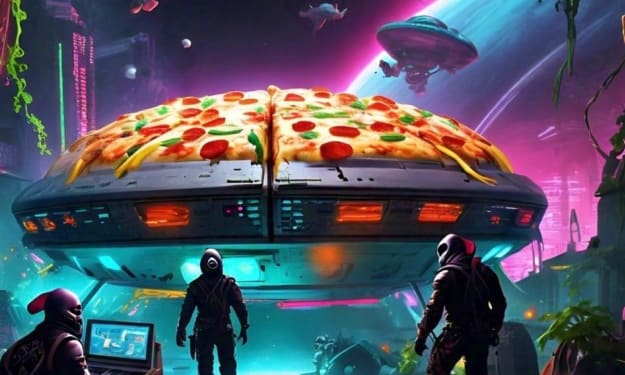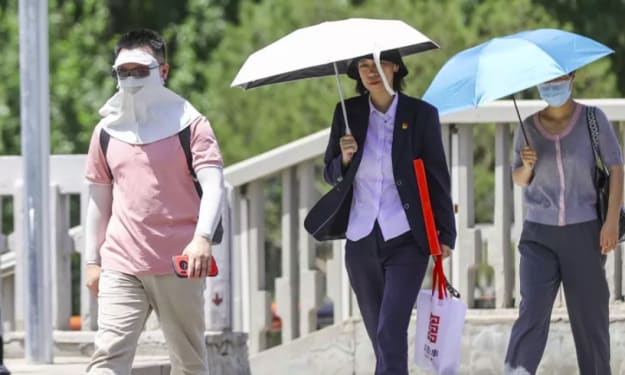The Last Hope
A Desperate Race Against Time to Save the Planet from Climate Change

In the year 2050, the world was on the brink of collapse. Climate change, once a distant threat, had become a harsh reality. Rising temperatures, devastating natural disasters, and unpredictable weather patterns had become the new norm.
Dr. Maria Rodriguez, a renowned climate scientist, stood at the edge of the melting Arctic ice cap, gazing out at the vast expanse of open water. She had dedicated her life to studying the effects of climate change, and now, she was witnessing its devastating consequences firsthand.
Maria's team had been tracking the rapid decline of the ice cap, and the data was alarming. If the current rate of melting continued, the Arctic would be ice-free within a decade, triggering a global catastrophe.
Determined to sound the alarm, Maria returned to her laboratory and began analyzing the data. She knew she had to act fast, but the political landscape was treacherous. Denial and misinformation had become the norm, and the fossil fuel industry was fighting hard to maintain its grip on the economy.
Undeterred, Maria joined forces with a group of like-minded scientists, activists, and policymakers. Together, they formed the "Climate Coalition," a grassroots movement aimed at forcing governments and corporations to take immediate action.
Their first target was the upcoming Global Climate Summit in Paris. Maria and her team worked tirelessly to prepare a comprehensive report, detailing the catastrophic consequences of inaction. They also organized a massive protest, mobilizing millions of people worldwide to demand change.
As the summit approached, the tension was palpable. World leaders, under pressure from the Climate Coalition, were finally beginning to acknowledge the crisis. But the fossil fuel industry was fighting back, using every trick in the book to discredit Maria and her team.
On the eve of the summit, Maria received a chilling warning from an anonymous source: "Drop your crusade or face the consequences." But she refused to back down.
The next day, Maria took the stage at the summit, her voice shaking with emotion as she presented the report. The data was stark: if global emissions weren't reduced by 50% within the next decade, the planet would reach a tipping point, triggering irreversible damage.
The audience was stunned into silence. World leaders, realizing the gravity of the situation, finally began to take action. Agreements were signed, commitments were made, and the Paris Accord was born.
But Maria knew the battle was far from over. The fossil fuel industry would continue to fight, and the clock was ticking. She redoubled her efforts, rallying the Climate Coalition to push for more drastic measures.
In the years that followed, the world slowly began to transform. Renewable energy sources became the norm, carbon capture technologies were developed, and sustainable practices became the standard.
But the damage had already been done. Rising sea levels had displaced millions, extreme weather events had become the new norm, and the planet was forever changed.
Maria's team had bought humanity a little more time, but the fight was far from over. As she stood on the edge of the Arctic ice cap, now a shadow of its former self, she knew that the last hope for the planet lay in the hands of future generations.
The story of Maria and the Climate Coalition served as a beacon of hope, a reminder that even in the darkest of times, courage, determination, and collective action could change the course of history.
The clock was still ticking, but humanity had been given a second chance. It was up to them to seize it, and fight for a future worth living.
Climate change is a pressing global issue that requires immediate attention and action. The scientific consensus is clear: human activities, particularly the emission of greenhouse gases from burning fossil fuels, are significantly contributing to the warming of the planet.
The consequences of climate change are far-reaching and devastating, including:
- Rising sea levels and coastal erosion
- Extreme weather events like hurricanes, droughts, and wildfires
- Melting of glaciers and polar ice caps
- Loss of biodiversity and ecosystem disruption
- Negative impacts on human health, food security, and economic stability
However, there is hope for mitigation and adaptation. By transitioning to renewable energy sources, increasing energy efficiency, and adopting sustainable practices, we can reduce our carbon footprint and slow the rate of climate change.
Individuals, communities, organizations, and governments must work together to address this global challenge. We must prioritize climate resilience, support climate change research and development, and advocate for climate justice and equity.
The time for action is now. Let us join forces to protect our planet and ensure a sustainable future for all.
About the Creator
Masahudu Farida Tunteiya
"Welcome to my world of words! I'm a passionate writer and storyteller. With a keen eye for detail and a love for language Let's explore the infinite possibilities of the human spirit together, one word at a time."
Enjoyed the story? Support the Creator.
Subscribe for free to receive all their stories in your feed. You could also pledge your support or give them a one-off tip, letting them know you appreciate their work.





Comments (1)
NICE